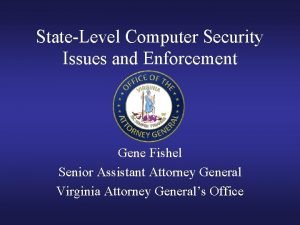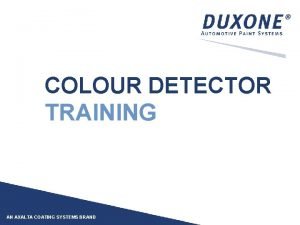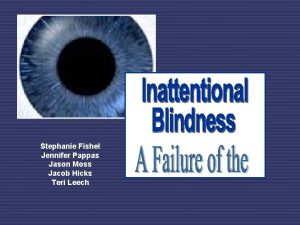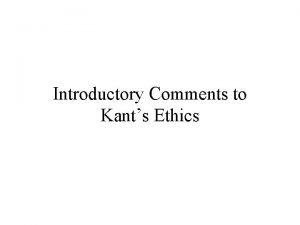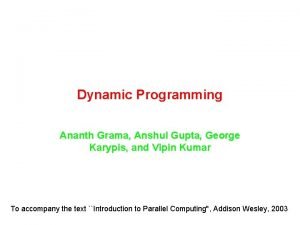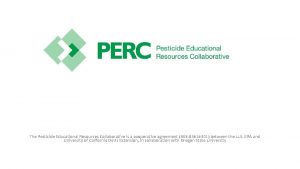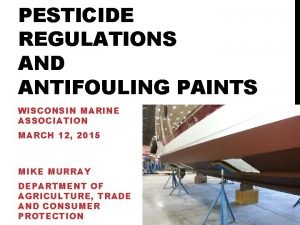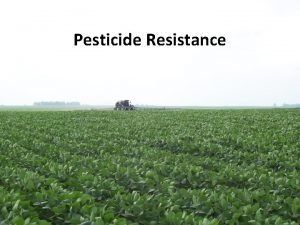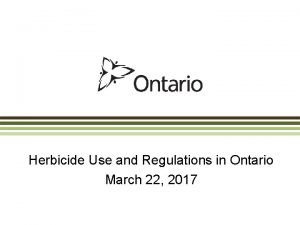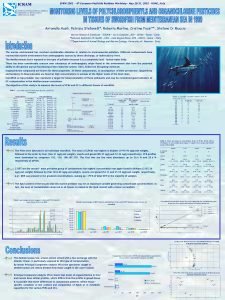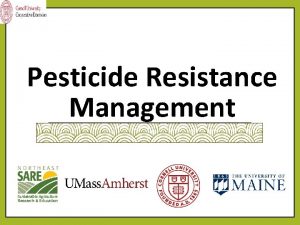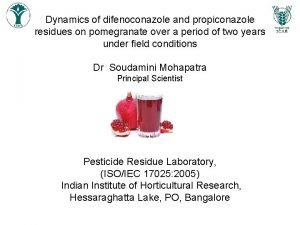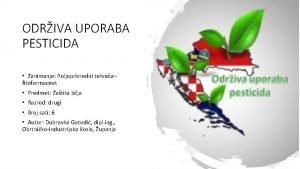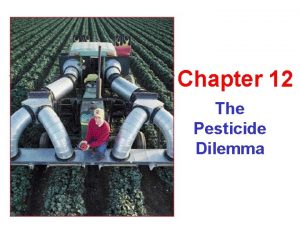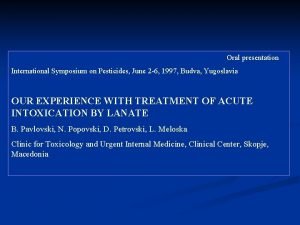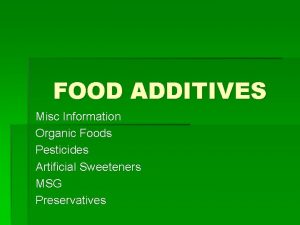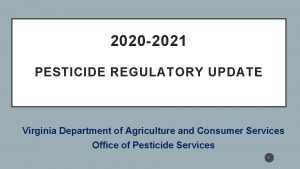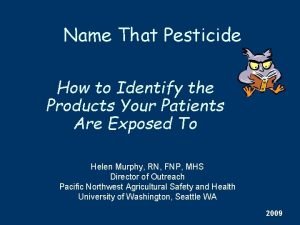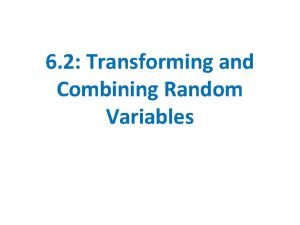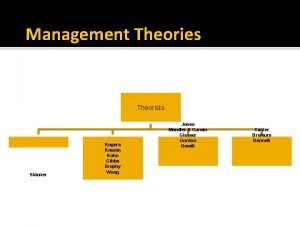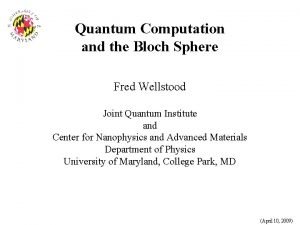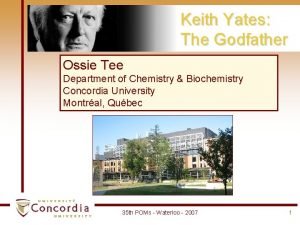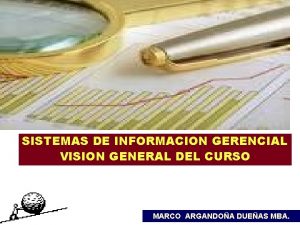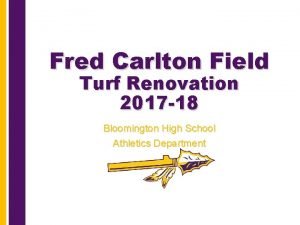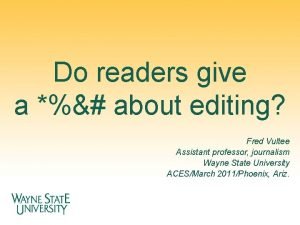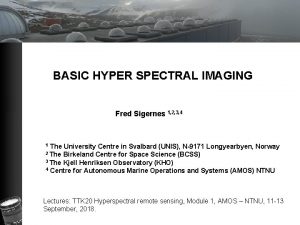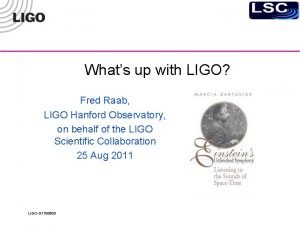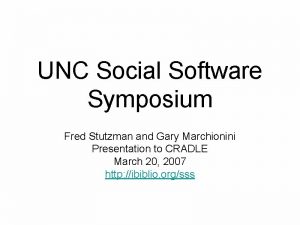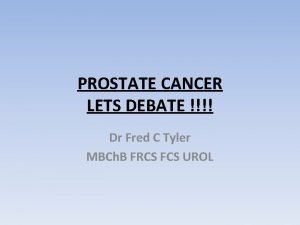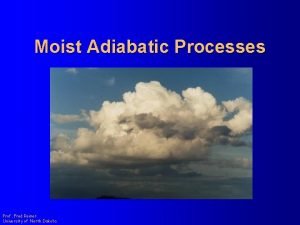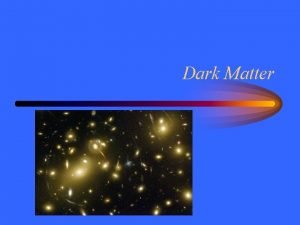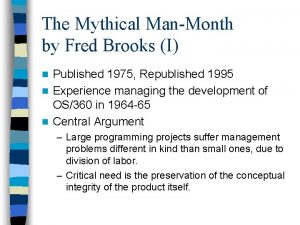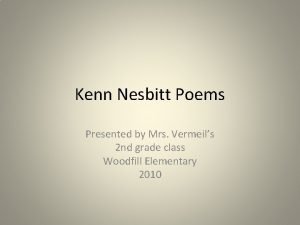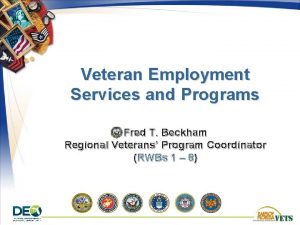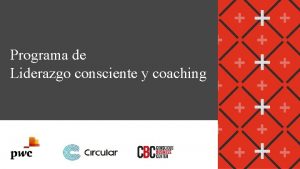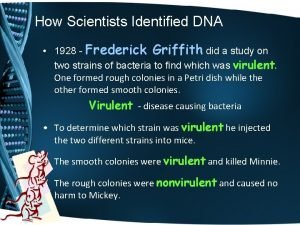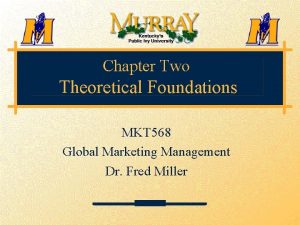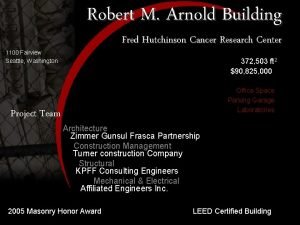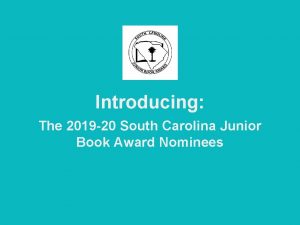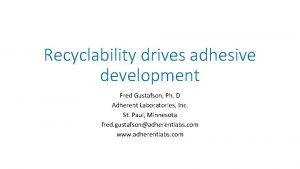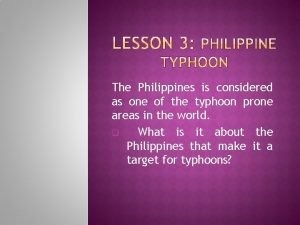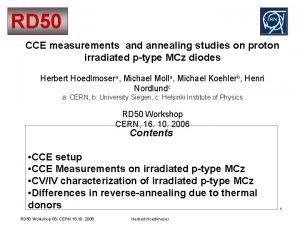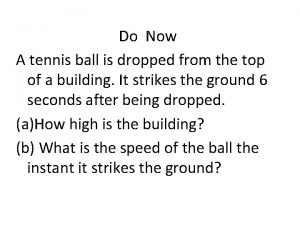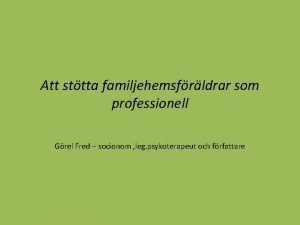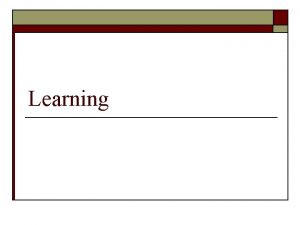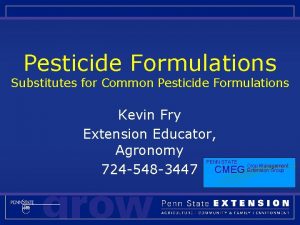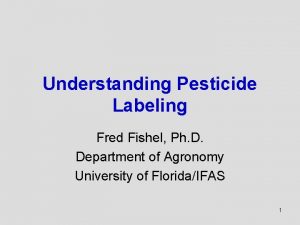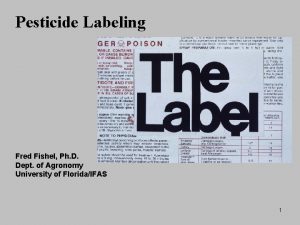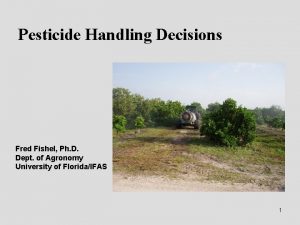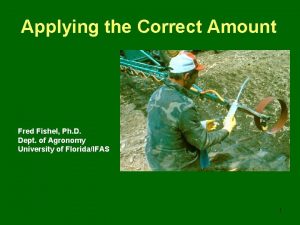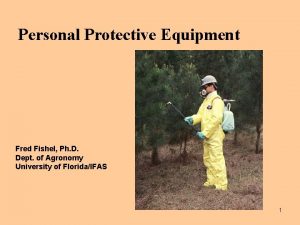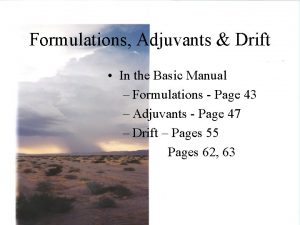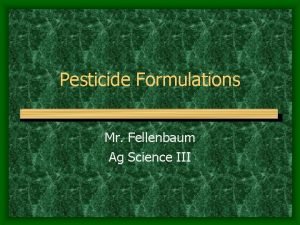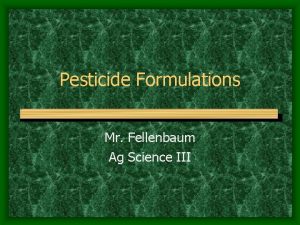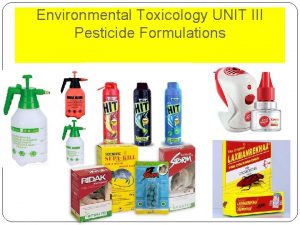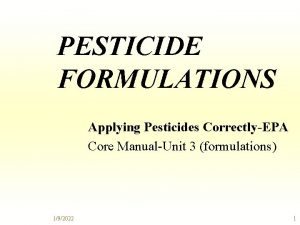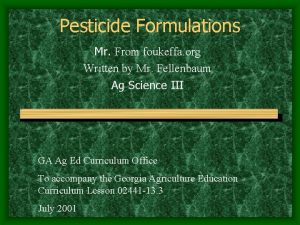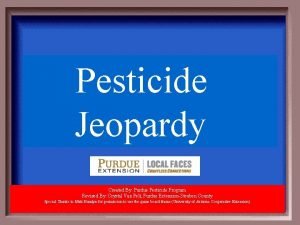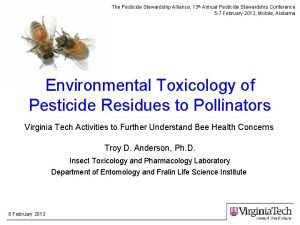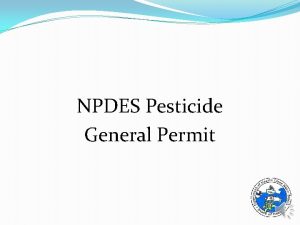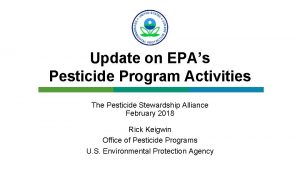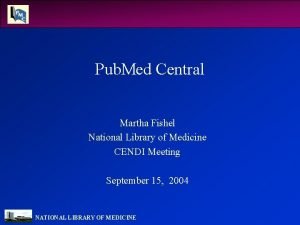Pesticide Formulations Fred Fishel Ph D Department of




























































- Slides: 60

Pesticide Formulations Fred Fishel, Ph. D. Department of Agronomy University of Florida/IFAS 1

Information that will be presented throughout this presentation is based upon Unit 3 in the Florida Core Manual, Applying Pesticides Correctly. You can purchase a copy to keep on hand for a reference from the IFAS Extension Bookstore. 2

Objectives • Participants should be able to describe – The components of a formulation – Advantages and disadvantages of • Liquid formulations • Dry formulations • Fumigants – Different types of adjuvants and their purpose 3

Pretest Here • All questions 4

Pesticide Ingredients • ACTIVE – responsible for killing the pest • INERT – makes the formulation safer, more effective and easier to handle • ADJUVANT – may or may not already be present in the product; used for the same reason as the inert ingredients 5

A single active ingredient may be sold in more than one formulation. 6

Formulation Considerations: • Do you have the right equipment? • Can it be applied safely under the existing conditions? • Will it reach the target and stay in place? • Will it harm contacted surfaces? 7

Liquid Formulations and Abbreviations • • RTU – ready to use EC or E – emulsifiable concentrate S, SL or SC – water soluble liquids AS, F, FL, L or WDL – aqueous suspensions, flowables, waterdispersible liquids 8

9

The amount of active ingredient in liquid pesticides is expressed in pounds per gallon. 4 pounds a. i. per gallon 10

Emulsifiable Concentrates (EC or E) -oils dispersed in water and contain an emulsifier which allows them to be mixed with water 11

Emulsifiable Concentrates • Advantages – Versatile with many uses – Needs little, but some agitation – Not abrasive – Don’t plug nozzles or screens – Don’t leave visible residues 12

Emulsifiable Concentrates • Disadvantages – Potential foliage burn under high temps – Readily absorbed through skin – Deterioration of hoses – Discoloration of painted surfaces, corrosive, flammability 13

Water-soluble liquids (S, SL or SC) -once mixed with water, there is no settling out 14

Ready-to-Use (RTU) 15

Flowables/Water-Dispersible Liquids (AS, F, FL, L or WDL) -thick materials that require a good agitation system 16

• Smoke and fog generators are used in structures for insect control • Require specialized equipment • Difficult to confine to target sites • May require respirator use 17

Invert emulsions form large drops to minimize drift. 18

What is the name of the portion of a pesticide formulation that is responsible for killing or repelling a pest? A. B. C. D. Poison Active ingredient Inert ingredient Adjuvant 19

What is the name of the portion of a pesticide formulation that is responsible for killing or repelling a pest? A. B. C. D. Poison Active ingredient Inert ingredient Adjuvant 20

An identical active ingredient may be sold in more than one formulation. A. True B. False 21

An identical active ingredient may be sold in more than one formulation. A. True B. False 22

What is the formulation of this product? A. Flowable B. Solution C. Emulsifiable concentrate D. Ready-to-use 23

What is the formulation of this product? A. Flowable B. Solution C. Emulsifiable concentrate D. Ready-to-use 24

How much active ingredient is contained in this product? A. B. C. D. 3. 3% 0. 33% 3. 3 lbs/gal 33 lbs/gal 25

How much active ingredient is contained in this product? A. B. C. D. 3. 3% 0. 33% 3. 3 lbs/gal 33 lbs/gal 26

Which formulation does not separate or settle out? A. B. C. D. Emulsifiable concentrate Flowable Invert emulsion Solution 27

Which formulation does not separate or settle out? A. B. C. D. Emulsifiable concentrate Flowable Invert emulsion Solution 28

Which of the following formulations would be least likely to drift? A. B. C. D. Invert emulsion Smoke generator Ready-to-use Solution 29

Which of the following formulations would be least likely to drift? A. B. C. D. Invert emulsion Smoke generator Ready-to-use Solution 30

Dry Formulations and Abbreviations • • D – dusts B – baits G – granular WP or W – wettable powder SP or WSP– soluble powder DF – dry flowable WDG – water dispersible granule 31

32

Most dusts are ready-to-use. 33

A bait is an example of a dry formulated product that is applied without mixing. 34

35

Granular (G) 36

Granular (G) • Advantages – Ready-to-use – No drift – Commonly used in turf and ornamentals • Disadvantages – Bulky – Non-target organisms (birds) may consume – Potential off-site movement from rain/wind – Distribution can be difficult 37

Wettable Powders (W or WP) 38

Wettable Powders (W or WP) • Advantages – Relatively safe on foliage (no burning) • Disadvantages – Constant agitation required – Inhalation hazard – Abrasive wear of equipment 39

Dry Flowables (DF) and Water Dispersible Granules (WDG) 40

Dry Flowables (DF) and Water Dispersible Granules (WDG) • Advantages – Less inhalation hazard than WPs • Disadvantages – Essentially the same as the WPs 41

Tank-mixing Formulations • • • Ok, if not label-prohibited Do jar test first Proper mixing sequence First Diluent WDG or WP Agitate L, S, FL or Surfactant Last EC 42

Fumigants 43

Fumigants • • • Highly toxic to many organisms Off-site movement potential Extreme inhalation hazard 44

45

Adjuvants • • • Wetting agents Emulsifiers Spreaders Stickers Anti-foaming agents • • Foaming agents Safeners Compatibility agents Buffers 46

Check the label – some pesticides require adjuvants for effectiveness. 47

Which formulation is ready-to-use? A. B. C. D. Wettable powder Dust Water dispersible granule Dry flowable 48

Which formulation is ready-to-use? A. B. C. D. Wettable powder Dust Water dispersible granule Dry flowable 49

Which formulation is most widely applied to lawns? A. B. C. D. Granule Dust Water dispersible granule Emulsifiable concentrate 50

Which formulation is most widely applied to lawns? A. B. C. D. Granule Dust Water dispersible granule Emulsifiable concentrate 51

What is the main limitation of wettable powders? A. B. C. D. They pose a severe inhalation hazard They easily drift off-site They require constant agitation They cause severe foliage burn 52

What is the main limitation of wettable powders? A. B. C. D. They pose a severe inhalation hazard They easily drift off-site They require constant agitation They cause severe foliage burn 53

Which formulation has a severe inhalation hazard A. B. C. D. Emulsifiable concentrate Wettable powder Water-dispersible granule Fumigant 54

Which formulation has a severe inhalation hazard A. B. C. D. Emulsifiable concentrate Wettable powder Water-dispersible granule Fumigant 55

What is the primary purpose of an adjuvant? A. B. C. D. To make the pesticide more effective To reduce inhalation risk To reduce foliar burn To add nutrients for plant growth 56

What is the primary purpose of an adjuvant? A. B. C. D. To make the pesticide more effective To reduce inhalation risk To reduce foliar burn To add nutrients for plant growth 57

How much active ingredient is contained in this product? A. B. C. D. 60% 60 pounds 40% 40 pounds 58

How much active ingredient is contained in this product? A. B. C. D. 60% 60 pounds 40% 40 pounds 59

Photo Credits • • • University of Florida Dept. of Entomology and Nematology University of Missouri N. C. State University of Arizona Purdue University Degesch America, Inc. Mention of trade names in this presentation is solely for providing specific information. It is not a guarantee or warranty of the products named, and does not signify that they are approved to the exclusion of others of suitable composition. Use pesticides safely. Read and follow directions on the manufacturer’s label. Fred Fishel, Ph. D. Department of Agronomy University of Florida/IFAS Copyright 2006 University of Florida 60
 Gene fishel
Gene fishel Stephen fishel
Stephen fishel Duxone colour formulations
Duxone colour formulations Immanuel kant categorical imperative
Immanuel kant categorical imperative Stephanie fishel
Stephanie fishel As discussed
As discussed Serial monadic dp formulation
Serial monadic dp formulation Pesticide educational resources collaborative
Pesticide educational resources collaborative Wisconsin pesticide applicator license
Wisconsin pesticide applicator license Define pesticide resistance
Define pesticide resistance Ontario pesticide regulations
Ontario pesticide regulations European pesticide residue workshop
European pesticide residue workshop Xxxxxxxxxx xxxxxxxxx
Xxxxxxxxxx xxxxxxxxx Agriculture pesticide difenoconazole
Agriculture pesticide difenoconazole Tablica za pesticide
Tablica za pesticide Pesticide treadmill definition
Pesticide treadmill definition Lanate pesticide
Lanate pesticide Msg pesticide
Msg pesticide Virginia pesticide registration
Virginia pesticide registration Pesticide classification chart
Pesticide classification chart Transforming and combining random variables
Transforming and combining random variables Dreikurs classroom management theory
Dreikurs classroom management theory Optical bloch equations two-level system
Optical bloch equations two-level system Fred strodtbeck
Fred strodtbeck The inside track dr fred bell
The inside track dr fred bell Fred yates
Fred yates Fred doherty
Fred doherty Barn i alla länder vill att det ska bli fred
Barn i alla länder vill att det ska bli fred Fred luthas
Fred luthas Activity 1 review
Activity 1 review Fred carlton field
Fred carlton field Fred vultee
Fred vultee Fred rockwell
Fred rockwell Musikaalitähti fred
Musikaalitähti fred Fred ndembi
Fred ndembi Fred sigernes
Fred sigernes Fred raab
Fred raab Fred van horzen
Fred van horzen Fred stutzman
Fred stutzman Debate
Debate Fred remer
Fred remer Tahapan manajemen strategi menurut fred r. david
Tahapan manajemen strategi menurut fred r. david Fred zwicky
Fred zwicky Fred brooks mythical man month
Fred brooks mythical man month Bubble wrap poem
Bubble wrap poem Vpl 03-14
Vpl 03-14 Rasgo de liderazgo
Rasgo de liderazgo Liderazgo consciente kofman
Liderazgo consciente kofman 1928 griffith
1928 griffith Dr fred miller
Dr fred miller Fred hutch arnold building
Fred hutch arnold building Fred korematsu
Fred korematsu Fred kniffen housing styles
Fred kniffen housing styles Fred gustafson
Fred gustafson Companion star theory fred hoyle
Companion star theory fred hoyle Fred ku
Fred ku Fred w066
Fred w066 Vertical y horizontal
Vertical y horizontal Färdighetskunskap
Färdighetskunskap Bonding fred
Bonding fred Intermittent schedule of reinforcement
Intermittent schedule of reinforcement
